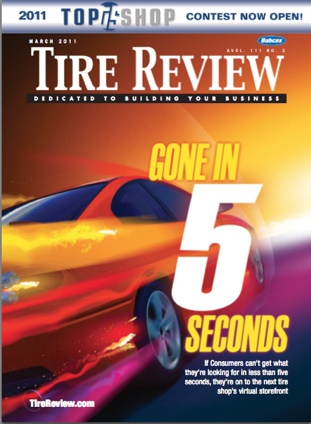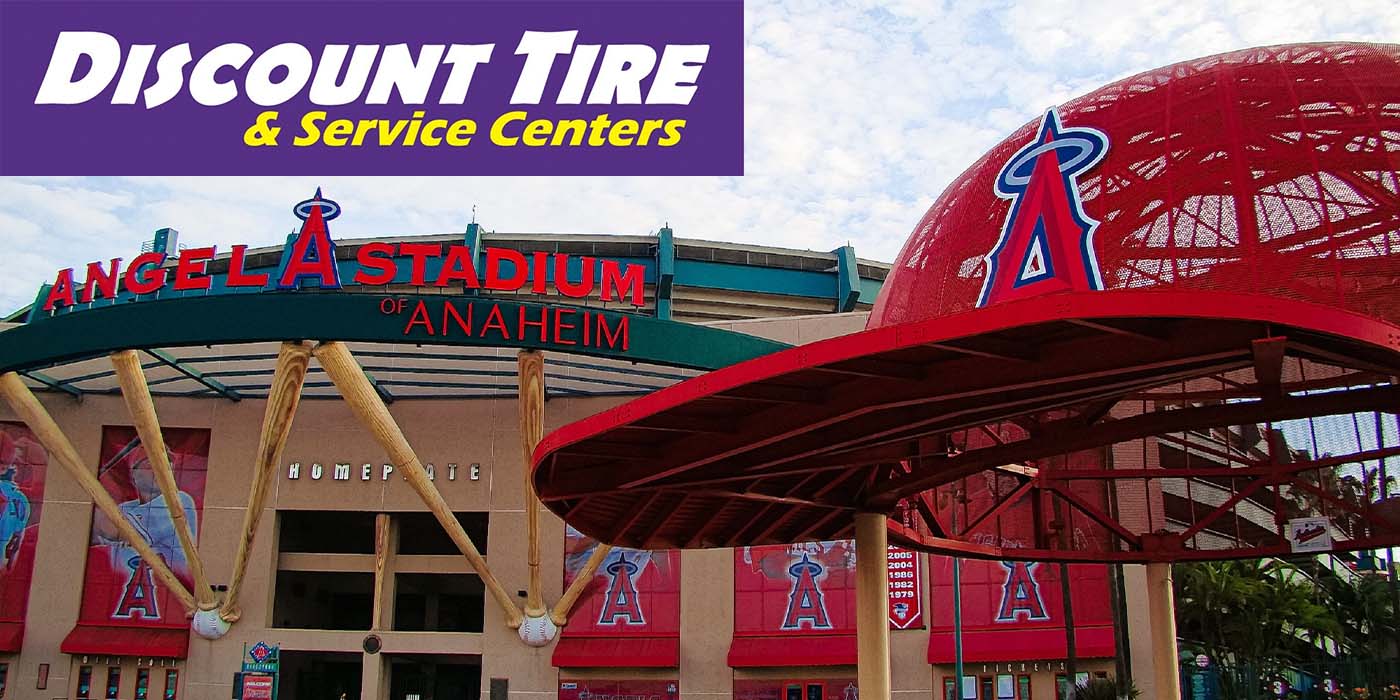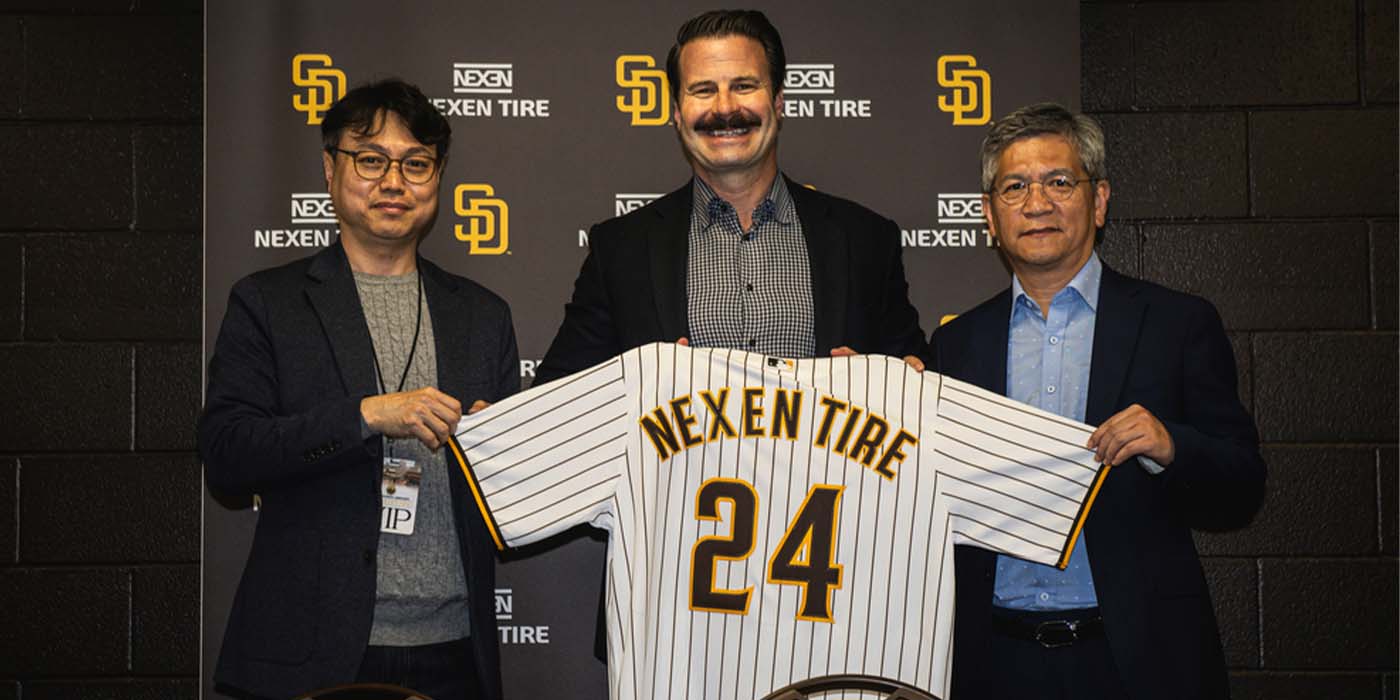It’s time to turn on the virtual "open" sign, dust off the cyber "welcome" mat and get those customers through the door – the web-based door, that is – to your Internet storefront.
All things "e," after all, are the alternate entryways to today’s businesses. And while most tire dealers who want pixel portals already have them, the more functionally attractive those electronic passageways are, the more potential business a dealership can expect. With as quickly as the cyber world deems elements obsolete, there’s little time to waste before upgrading.
“We tell our customers, ‘It’s not if you’re on the web, it’s how well you’re on the web,’” says Molly Reese, executive director of marketing for Tire Company Solutions/Tire Power Software, one of several companies helping dealerships improve their online presence to increase revenue and enhance customer experiences.
Whether delving into e-mail marketing and full e-commerce, or exploring customer feedback and coupon options, or focusing on search engine optimization and general website improvement, savvy tire dealers are reinventing the Internet wheel.
Getting a Tune-up
The virtual world is a lot like a premium UHP tire: It can go very fast, but it will change often.
“If consumers land on a dealer’s website and can’t get what they’re looking for in less than five seconds, they’re on to the next tire shop’s virtual storefront,” says Reese. So, experts agree that one of the first things a dealership can do to improve its online presence is make its website more customer-friendly.
“The design reflects your personality, customer service and attitude, but site usability is essential since most users make up their mind whether or not to click past the home page within seconds,” says Heather Blessington, CEO of Duo Web Solutions. “If they do proceed to the interior pages of the site, you need to make sure they can find what they’re looking for.”
Blessington suggests that dealers ask five laymen, who aren’t familiar with the site but are likely customers, to browse their web pages. “Ask them to find certain things, such as information on your services or products,” she says. “Watch them as they navigate and note where they stumble or get lost. These simple tests can provide a wealth of knowledge when it comes to planning an intuitive site navigation.”
“Fewer clicks to the critical elements is king,” Reese agrees.
But what are those elements?
Patrick Sandone, president and CEO of the web-development firm Net Driven, says that catalog and price-quoting features are among the upgrades his company promotes. “Independent research shows that these features can enhance the conversion of visitors into business leads by 300% to 400%,” he says. “Also, these can be configured so that the retailer need not post pricing online, allowing a salesperson at the business to close the sale.” Meanwhile, price-comparison tools, he says, “allow consumers to understand the lifetime cost of owning tires and why a local dealer might be a better option than an online retailer or mass merchant.”
Reese agrees that features conducive to actual shopping are imperative. “(People) don’t want to come to your site to see if you have the tire they’re looking for,” she says. “They want to know price and they want to know fast.” She suggests tire-finder and quote-request options to meet that demand.
“A tire finder should be center stage on your site,” she says. “Allow the consumer to compare prices of different tires and packages on your site, giving them as much information as possible so their desire to leave before giving your their contact information is minimized.
“Once the consumer has found the selection of tires you offer, whether you’re putting pricing online or asking the consumer to contact you (through quote requests), offer an online discount, which requires the consumer to input contact information,” she adds. “Do everything you can at every page to find out who is shopping, so someone can follow up and convert the shopper into a buyer.”
Other add-ons that web developers tout are article encyclopedias, online coupons and special-offer pages. The latter two, Reese says, are often the first things customers seek after landing on a home page.
“In our usability testing, we found that females respond well to the word ‘free,’” she explains. “They click on these coupons first. Coupon or manufacturer offers should be center stage, with a call-to-action to ‘click here for more offers, coupons or discounts.’”
But Mark Claypool, CEO of the web-presence management company Optima Worldwide, cuts to the proverbial chase when it comes to defining a well-upgraded site. “A business website has one purpose and only one purpose: increasing sales,” he says. “Anything else is a waste of time and money. So your site needs to be effective. Having a presence online needs to be managed. You need a website that makes a great first impression, and you have about a nanosecond to make that impression.
“Does the site wow you?” he asks. “Does it build trust, establish professionalism? Is it aesthetically pleasing? Does it try to direct behavior toward placing an order, picking up the phone and calling or submitting a request for more information?”
If not, your virtual “open” sign and your cyber “welcome” mat may not quite be in place.
We Need to Talk
So, if interacting with customers is key, what you tell them is only as important as what they tell you – and where. Experts, therefore, agree that dealers shouldn’t fear setting up customer feedback options.
“The advantages of having a customer feedback form on your website include improved customer retention and reduced risk of having negative reviews appear on Google and other websites,” Sandone says.
“Shoppers validate your site and services with these tools,” Reese adds. “Don’t be afraid of negative feedback. The goal is to manage the negative feedback.”
“This is an ideal way to gather reviews,” Blessington agrees, “and keep a handle on your online reputation.”
Even dealers who add online surveys and feedback forms to their websites, however, shouldn’t forget or ignore customers’ access to social media. Claypool considers sites like Yelp, City Search and Manta as extensions of the reputation-management function of a dealer’s customer feedback tool.
“(Dealers) need to claim their listings here, pay attention to what is being said about them and interact,” he says. “Peer reviews are trusted way more than advertising these days…You can’t afford to be on the sidelines looking in on social media. The days of pay-to-play are phasing out and giving way to play-to-play. That involves participating in an arena that more than half a billion people are participating in.”
“Consumers want to be able to use the venues they are using on a regular basis to learn about or communicate with you,” Reese explains. “Social media and ratings tools should be included on your home page. Whether you simply have an icon that communicates that you have an active Facebook, Twitter or other social media site, or you actually have a social media feed on your home page, offer these things center stage. Social media is the venue by which consumers want to shake your hand. Once they do, then they’re going to reach out to others to ask about your store.”
“Dealers need to keep up with the integration of social media and the ability customers have to write reviews on search sites like Google Places, Yahoo Local, YP.com and more than 50 others,” Blessington says. “We find that the vast majority have not done this. But it’s important to know that these sites have replaced the Yellow Pages, so business information needs to be updated at all times. Business reviews need to be monitored and replied to on a consistent basis in order to keep an online reputation intact.
“Social media is not optional,” she adds. “At a minimum, your business needs to be on Facebook, and Twitter is an easy add-on. We often hear from dealers, ‘I don’t get it’ when it comes to social media. Our response is, ‘You don’t need to. Your customers are there, so you need to be there.’”
On the Map
Nevermind the “open” sign and the “welcome” mat. Building a great website and having poor search engine optimization (SEO) is like building a shop in a bad part of town and removing the street signs.
That’s how Reese sees it. And that’s why she and most of the other experts cited here recommend employing only experienced professionals when dealing with SEO, the purpose of which is to make a site as search engine-friendly as possible.
“SEO is a science unto itself,” Claypool says. “Very few developers are SEO specialists, though many say they’ll SEO your site, maybe charge you extra. But in our analysis of websites, we find that few even get the most basic concepts right.”
How does a web expert improve SEO? Claypool explains it this way:
“SEO is taking a website that is built by people and making it consumable for other people, as well as search-engine bots. The bots crawl the web looking for websites, and then they determine what the site is about, what the company does and where. These bots can only read text, so understanding the key words people use to find the products and services you sell is essential.
“These bots can’t see images, they can’t see Flash – which many developers use to build sites these days – and they can’t see video,” he says. “Make sure your content, including your address and phone number, are in text and not in images. And if someone tells you they’ll include all the right ‘meta tags’ on your site as part of optimization, go somewhere else. That’s so five years ago. Google changed its algorithms, used to rank websites, more than 300 times last year alone. It’s a constantly changing dynamic and requires someone who truly specializes in SEO to get it right.
“Many developers are still coding sites by using what they learned five-plus years ago,” he adds. “That can hurt your search engine rankings because Google, Bing and others must sift through all that code to get to your content. It’s like a skilled author saying something in two-to-three sentences that it takes a less-skilled author two-to-three paragraphs to say. Less is more in website programming, and your site will load faster and be rewarded by search engines for it.”
Reese, who also stresses the importance of hiring a true SEO expert, says a dealer should get the guru involved in the “front end” of the website and start with the basics while building it. Among the basics she suggests are creating unique URLs, knowing relevant key words and setting up analytics to monitor usage numbers.
“Remember,” she says, “SEO is not a one-time setup, and the more you put in, the more you get out.”
Meanwhile, Blessington recommends using a blog as a site’s “home base,” using it to publish timely, relevant information consistently. “Google and other search engines look for these factors when ranking your site,” she explains, “the new content, the relevance to key words, and the authority or length of time a blog has been in existence.”
She also blatantly advises dealers to “beware of scams in SEO territory.” Google’s algorithm changes, she says, have forced search engine marketing companies to switch strategies. “Ask the SEO company you’re considering what they’ve done about these changes,” she says, “and how it may impact your pending campaign.”
‘E’ is for ‘Emerging’
Though websites are common among tire dealerships, few of the sites are being used for full e-commerce – for actually selling tires online. Reese says only between 3% and 5% of tires are sold that way, though the number is “growing by the minute.” And more independent dealers are trying some form of e-commerce.
“It’s a huge focus area for dealers in the future,” she says. “All you have to do is look at Tire Rack’s numbers and see that people want to shop online for tires. So, why not be safe and sell online, so you’re in the competition for someone price-shopping online?”
Reese suggests several things to help ensure the success of tire-industry e-commerce pioneers: “Allow shipping options,” she says. “This opens up your shop to the entire U.S. Many of our dealers are pushing to sell tires online beyond the territory of their stores. Provide options, comparison features, detailed manufacturer specs and product information. Up-sell packages and other services. And allow an appointment scheduler at the time of purchase.”
Meanwhile, Claypool emphasizes the security aspect of e-commerce. “It entails having secure online services for taking and protecting important data related to customers’ personal information,” he says, “including their address, phone number, e-mail address and, most importantly, their credit card information. Setting up a good e-commerce site can be expensive and is not to be entered into lightly. Do your research and find a reputable developer…It will take a lot of work and cost a lot of money.”
Whether it is worth all of that to your operation is strictly up to you.
You’ve Got Mail
While e-commerce is still a tire industry rarity, few dealers’ virtual storefronts lack a cyber mailbox. E-mail is free, easy, everywhere – and potentially annoying.
No dealer wants to be considered a mere contributor to junk mail, so strategies exist to avoid that perception.
“Ideally, you want people to ‘opt-in’ to your e-mail newsletters and solicitations,” Claypool says. “Targeted e-mail marketing can be effective, but can also turn a lot of people off.”
“These customers (who opt-in) represent your targeted demographic,” Blessington says of the added benefit, “and they are most likely to respond to your offers.”
“The key to successful e-mail marketing is to get people who want to receive your e-mails and offer them content they’re interested in,” Reese agrees. “Your web company should offer this as a feature. As they’re partnering with you to contact surfer information, they can then help you touch those consumers via e-mail. Providing surfers with the option to enter a simple name and e-mail address to receive a newsletter or discounts on your home page also is a good practice.”
Reese offers these rules of thumb for successful e-mail marketing:
“A catchy subject line is very important to get the recipient to open the mail,” she says. “Be careful to avoid words and phrases that trigger some spam filters, like ‘free.’ Content should be concise, to the point, and focused on recipients’ needs. You can offer new or discounted products or services, or get really targeted and send out service reminders via e-mail. E-mailing too often is annoying, (so do it) once a week at the most. And give readers the option to opt off your mailing list.”
Blessington and Claypool also stress the importance of using a reputable, reliable e-mail service, both mentioning Constant Contact among them.
“You can customize the look and feel of outgoing e-mails to match your brand and the look and feel of your company,” Claypool says. “Constant Contact will report to you how many people actually opened your e-mail and who clicked on what links. You can also manage online surveys with Constant Contact. It’s a great service that provides you with measurable outcomes of your e-mail outreach.”
“These companies have IP addresses that are ‘white-listed’ and they have strict spam control to assure that more of your e-mails will get through to your targeted customers,” Blessington adds. “Most e-mail marketing services place a limit on the number of spam complaints and opt-out requests allowed, so those who attempt to market to unsolicited customers through purchased lists are quickly shut down.”
Those Who’ve Done It
Techie talk may offer ideas, but real-life experiences offer proof.
Scott Williams, president of Lex Brodie’s Tire Co. in Honolulu; Andy Chalofsky, co-owner of Network Tire in eastern Pennsylvania; and Gary Michaels, general manager of 2010 Tire Review Top Shop winner Tires, Tires, Tires in Sioux Falls, S.D., all have executed significant upgrades to their businesses’ online presence in recent months, with considerable success.
“Most people will Google you before they pick up a phone book,” Michaels says, “so it’s important to understand what customers are looking for. We upgraded our website to include current news, specials, safety information and the ability for customers to sign up for our e-mail updates. We also branched out into other areas of social media, including Facebook and Twitter.
“When individuals sign up to receive our e-newsletter through our website, they can then receive news updates and specials via e-mail,” he adds. “Customers can engage with us through our ‘contact us’ link on our website. They can also provide feedback through our Facebook page, where they interact with our mascot, Tireman.
“We were fortunate to work with a web designer who is well-versed in SEO,” he says. “The right designer can make sure your website content is organized using key words that will ensure your business is at the top of the search list.”
Chalofsky agrees about the importance of selecting the right web-design firm, in his case Reese’s Tire Company Solutions. “(With them), we were able to link up multiple inventories from suppliers and other associated warehouses, as well as custom-pricing integration, so our customers could see the widest inventory available on the market,” he says of his third site design in four years. “We also wanted to go with a company that could easily make changes and adapt the website as technology changes. This is ever so important, because technology is changing at such a rapid pace.”
One of Chalofsky’s favorite new elements, he says, is the customer feedback tool. “This is the hottest growing trend of 2011,” he says. “We’re currently working to integrate customer feedback into almost all of the tires we carry. People like to read what other people’s experiences are. TCS is helping to integrate this into our wholesale and retail sales so we can share these reviews with multiple independent dealers and pool our feedback together.”
Chalofsky also values his company’s e-mail marketing. “This is really important to Network Tire because we’re able to reach mass amounts of our customers with very little effort,” he explains. “We serve more than 1,000 dealers and need an easy platform to get messages, specials and basic information out. We’re able to see who opened the e-mails, who clicked on them and how much response we got from them. This was a substantial upgrade to snail mail, where we would just hope the customer would read it.”
When vague hopes can be transformed into hard numbers, a business can only benefit. And Williams has numbers to justify his upgrades.
“Currently, a third of our customers come in with website coupons,” he says. “Customers who search for an online coupon will be a mix of new and old customers who may have been on the fence about where they were going to buy tires or service their car. When we reviewed our web traffic numbers, we realized that we have many hits on the tires page, but not a super-high percentage click through to the ‘offers’ tab. Somehow, we lost the viewers’ interest. So, we’ve started a sizable website upgrade.”
Williams chose to use a local web design firm, but also contracted with Sandone’s Net Driven to “add industry-specific content and usable features to help online shoppers.”
“Net Driven is adding tire fitment search apps, a wealth of auto service information, auto service Q&A, an enhanced customer-feedback tool, and an online tire and mechanical quote tool, among other things,” he says. “The company says that adding a quoting system increases the chances of a website visitor becoming a customer by 350%.
“We’re getting the best of both worlds,” he says of using one local and one industry-based designer. “We’re improving our unique web design that highlights our community programs and rich history, and adding the successful industry-focused functions.”
But Williams hasn’t gotten involved in every aspect of online marketing. He doesn’t post prices, preferring not to compete on the basis of price alone, so he doesn’t engage in full e-commerce. As for SEO, he has gone organic, simply signing up his website with major search engines and developing his own key words. He also has forgone e-mail blasts in favor of social media interaction, saying he’d rather let his company’s actions speak more than its words.
And that requires customer feedback.
“When our customers get into their car, they find a mirror hanger (thanking them and asking that) they visit our website to provide feedback, at which time they’re entered into a $50 gas card drawing,” he explains. “We found customers are more honest when surveys are not filled out in front of you. And, of course, that drives folks to our website. We have a rating system for the survey, and any time one rates below seven, I will contact the customer and ask how we could have done better. This really wows customers.
“It’s better to refer customers initially to your feedback tool rather than let them go to public sites,” adds Williams, who nonetheless encourages them to share feedback on Yelp, to which he later responds. “We recognize that feedback shows us what we’re doing right and where we can improve. And we want to improve each and every day.”
That’s also the speed at which technology is improving. And opportunity is knocking at your virtual door.













